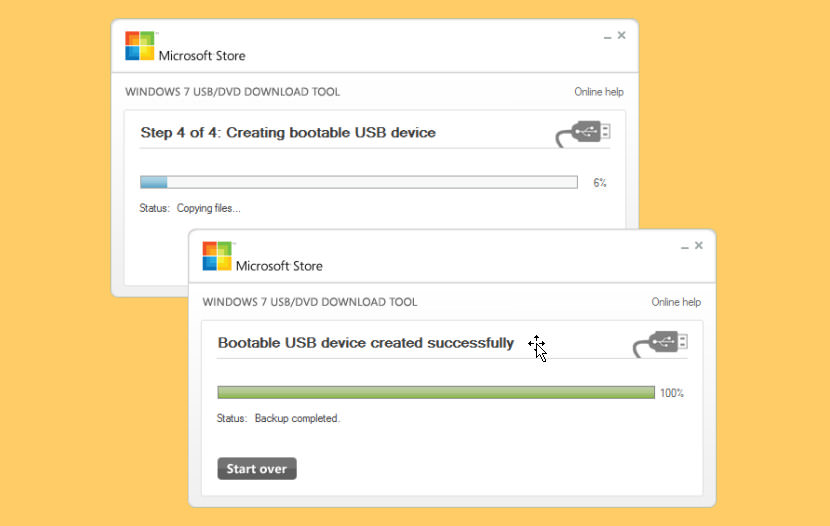

- #Windows 10 burn iso to usb bootable linux how to
- #Windows 10 burn iso to usb bootable linux install
- #Windows 10 burn iso to usb bootable linux full
- #Windows 10 burn iso to usb bootable linux windows 10
- #Windows 10 burn iso to usb bootable linux software
On the Format Options, change the Volume Label to something more descriptive.My recommendation is to accept the default – GPT. The default partitioning scheme is GPT but you can select MBR if you want to. The USB drive will be formatted by the tool.Accept the default – Standard Windows Installation. On Image Options section, the tool automatically selects Standard Windows Installation.

If you have imported more than one ISO image, you can make a selection from the Boot selection drop-down. It will then be selected in the Boot selection drop-down.
#Windows 10 burn iso to usb bootable linux windows 10
To import Windows 10 ISO, beside Disk or ISO image (Please select), click SELECT.If you have more than one USB storage device, click the Device drop-down.
#Windows 10 burn iso to usb bootable linux software

Save the file to a location on your PC.When the page opens, scroll to Downloads.Open Rufus.ie in your favorite browser.What makes this tool unique is that it does not require installation! To convert Windows 10 ISO to USB, you require an ISO to USB converter.
#Windows 10 burn iso to usb bootable linux how to
For steps to get one, use this guide How to Download Windows 10 ISO with Media Creation Tool. To complete the steps in this guide you require a Windows 10 ISO. The high-level steps to burn Windows 10 ISO to USB are: Use the comment form below to share your thoughts with us or ask questions.The steps in this guide demos how to burn Windows 10 ISO to USB. That’s it for now! In this article, we’ve explained two ways to create an ISO from a bootable USB drive in Linux. Create ISO from Bootable USB Using Gnome Disks Then enter your password to open the bootable device and the process should start if the authentication is successful. Create a Disk Partition Imageįrom the dialog window, set the name of the ISO file, its location and click Start creating. Then click on Create Disk Image option as shown in the following image. Then from the default interface, select the bootable device from the list of mounted devices on the left-hand pane, by clicking on it and click on disk options.
#Windows 10 burn iso to usb bootable linux install
$ sudo dnf install gnome-disk-utility #Fedora 22+Īfter successfully installing Gnome disk, search and open it from the system menu or dash. $ sudo yum install gnome-disk-utility #CentOS/RHEL $ sudo apt install gnome-disk-utility #Ubuntu/Debian If you don’t have gnome-disk utility on your system, you can install it by running the following command. (Self-Monitoring Analysis and Reporting Technology) attributes. It is used to format and partition drives, mount and unmount partitions, and query S.M.A.R.T. Gnome Disks is a graphical tool used to manage disk drives and media in Linux. $ ls -l /home/tecmint/Documents/Linux_Mint_19_XFCE.isoĬreate ISO from Bootable USB Using dd Command Create An ISO From A Bootable USB Drive Using Gnome Disks Once done, you can verify the ISO image using following ls command as shown.
#Windows 10 burn iso to usb bootable linux full
Make sure to replace /dev/sdb1 with your USB drive and /home/tecmint/Documents/Linux_Mint_19_XFCE.iso with the full name of the new ISO image. Now you can run the following command to create an ISO from a bootable USB drive as shown. dev/sdb1 iso9660 1.8G 1.8G 0 100% /media/tecmint/Linux Mint 19 Xfce 64-bitįrom the output above, you can clearly see that our attached USB device name is /dev/sdb1. Tmpfs tmpfs 3.9G 0 3.9G 0% /sys/fs/cgroup Sample Output Filesystem Type Size Used Avail Use% Mounted on To create an ISO image from a Bootable USB Drive files, first you need to insert your USB drive and then find the device name of your USB using following df command. Create An ISO From A Bootable USB Drive Using dd Toolĭd is a commonly used command-line tool for Linux and other Unix-like operating systems, used to convert and copy files. We will explain two ways to achieve this: via the command line interface (CLI) and a graphical user interface (GUI) program. In this article, we will show you how to create an ISO from a bootable USB drive in Linux.


 0 kommentar(er)
0 kommentar(er)
